In today’s competitive business landscape, understanding and connecting with your target audience is crucial to the success of your brand. By identifying who your ideal customers are, you can tailor your marketing efforts to effectively reach and engage with them.
Understanding the Importance of a Target Audience
Before we dive into the steps of finding your target audience, let’s first understand why it’s so important. A target audience is a specific group of people that your product or service is designed for. By defining your target audience, you can create a more focused marketing strategy and deliver personalized messages that resonate with your ideal customers.
When it comes to marketing, understanding your target audience is crucial for success. Without a clear understanding of who your customers are, it becomes difficult to create effective marketing campaigns that generate meaningful results. Your target audience is the key to unlocking the power of your brand and connecting with the right people.

Why Your Business Needs a Target Audience
Having a target audience helps you allocate your resources efficiently. By knowing your audience, you can create marketing campaigns that are tailored to their needs and preferences. This can lead to higher conversion rates and a stronger brand connection.
Imagine if you were trying to sell a high-end luxury product, but your marketing efforts were reaching a broad audience of budget-conscious individuals. The chances of converting those individuals into paying customers would be significantly lower compared to if you were targeting a specific audience of affluent individuals who appreciate luxury and are willing to invest in it. By identifying and understanding your target audience, you can ensure that your marketing efforts are focused and effective.
Furthermore, knowing your target audience allows you to optimize your marketing budget. Instead of spending resources on reaching a wide range of people who may not be interested in your product or service, you can concentrate your efforts on reaching the specific individuals who are most likely to become loyal customers. This targeted approach not only saves you money but also increases your return on investment.
The Role of a Target Audience in Marketing Strategy
When you have a clear understanding of your target audience, you can develop a marketing strategy that speaks directly to them. By crafting messages that address their pain points, desires, and aspirations, you can create a stronger emotional connection and build brand loyalty.
For example, if your target audience consists of environmentally conscious individuals who value sustainability, you can tailor your marketing messages to highlight how your product or service aligns with their values. By emphasizing the eco-friendly aspects of your offerings, you can appeal to their desire to make a positive impact on the environment. This targeted approach not only resonates with your audience on a deeper level but also sets you apart from competitors who may not be addressing these specific needs.
Understanding your target audience also allows you to identify the most effective marketing channels to reach them. Different demographics and customer segments have varying preferences when it comes to media consumption. By knowing your audience’s preferred channels, whether it’s social media, email marketing, or traditional advertising, you can ensure that your messages are delivered through the right channels at the right time.
In conclusion, having a clear understanding of your target audience is essential for the success of your business. It enables you to create tailored marketing campaigns, allocate your resources efficiently, and build a strong brand connection with your ideal customers. By investing time and effort into identifying and understanding your target audience, you can position your business for long-term growth and success.
Defining Your Product or Service
Before you can identify your target audience, you need to have a deep understanding of your product or service. Take some time to analyze what sets you apart from your competitors and what unique value you offer to your customers.
Identifying Your Unique Selling Proposition
Your unique selling proposition (USP) is what makes your product or service different from others in the market. It’s the compelling reason why customers should choose you over your competitors. Identify your USP and use it as a guiding factor in identifying your target audience.
Understanding Your Product’s Appeal
It’s also essential to understand why your product or service appeals to customers. What problem does it solve? What benefits does it provide? By knowing the answers to these questions, you can align your target audience with the specific needs that your product or service addresses.
Analyzing Your Competitors
Examining your competitors can provide valuable insights into your target audience. By understanding who your competitors are and how they target their audience, you can identify gaps and opportunities in the market.
Identifying Your Direct and Indirect Competitors
Your direct competitors offer similar products or services to yours, while indirect competitors may not offer the same solutions but target a similar audience. Analyzing both will give you a holistic perspective on the market and help you refine your target audience further.
Learning from Your Competitors’ Target Audience
Take a closer look at your competitors’ target audience. Who are they targeting? What messaging do they use? By understanding their approach, you can learn from their successes and failures and refine your own audience-targeting strategy.
Identifying Demographics
Demographics play a significant role in target audience identification. Understanding the age, gender, and income range of your potential customers provides valuable insights into their behavior and preferences.
Age, Gender, and Income: Key Demographic Factors
Consider how age, gender, and income may impact your target audience. Different age groups or genders may have varying needs and preferences. Income levels can also influence purchasing power and decision-making.
The Role of Geography in Target Audience
Geography can also play a crucial role in defining your target audience. Are your products or services location-specific? Understanding the geographic regions where your target audience resides can help you tailor your marketing efforts more effectively.
Understanding Psychographics
Psychographics dive deeper into the mindset and lifestyle of your target audience. By exploring their interests, values, and lifestyle choices, you can create more personalized marketing messages that resonate with them on a deeper level.
Interests, Lifestyle, and Values: Psychographic Factors
Explore the interests, lifestyle choices, and values that are important to your target audience. What hobbies do they enjoy? What are their core values? By aligning your brand messaging with their psychographic factors, you can create a stronger emotional connection and build brand loyalty.
The Importance of Psychographics in Audience Segmentation
Audience segmentation based on psychographics allows you to create targeted marketing campaigns that speak directly to the interests and values of your audience. By segmenting your audience, you can tailor your messaging and offers to specific groups, increasing the chances of connecting with them on a deeper level.
By following these eight steps, you can effectively identify and connect with your target audience. Remember, the key is to understand who your ideal customers are and tailor your marketing efforts to address their needs and preferences. With a solid understanding of your target audience, you can create impactful marketing campaigns that drive results and foster long-term customer relationships.





